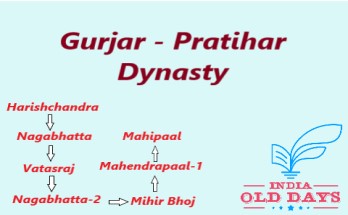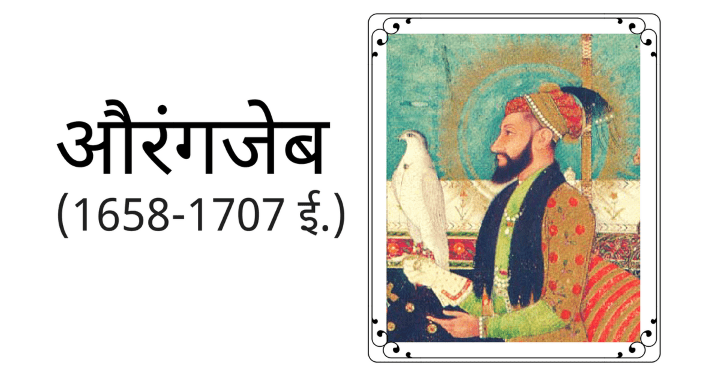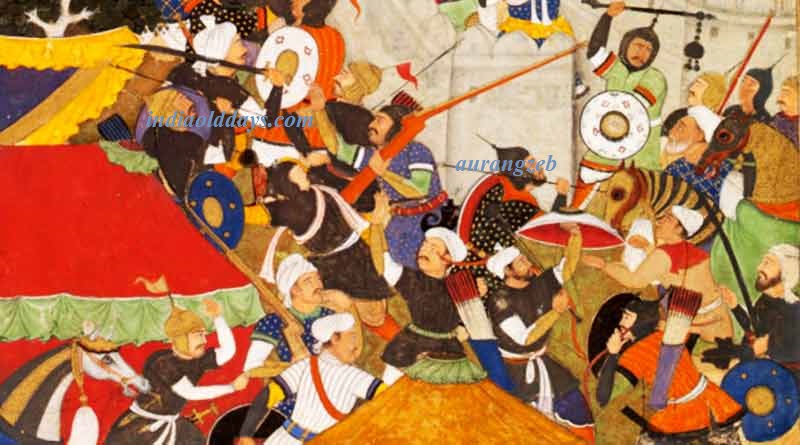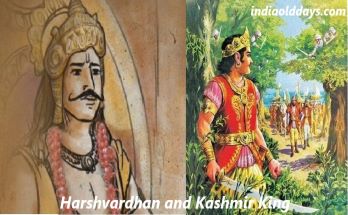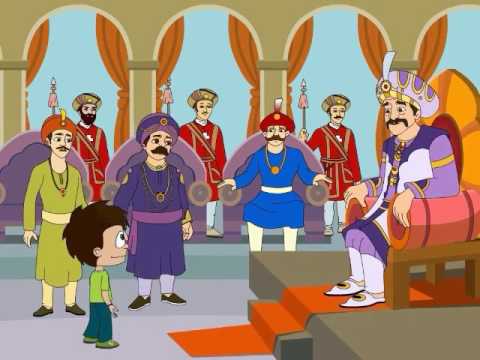Balabhi’s Maitrak Dynasty
The Powerful Gupta empire completely disintegrated between 550 AD ie 6th Century AD. The fall of the Gupta Empire once again encouraged the tendencies of decentralization and division in Indian politics. Many local feudatories and rulers declared their independence and advanced rapidly in the race for power.
Till the time of the rise of Harsh, the following powers were particularly active in the politics of north and west India-
- Balabhi’s Maitrak,
- Hun of Punjab,
- Malwa Yashodharman,
- Uttargupta of Magadh and Malwa,
- Kannauj’s Maukhari
Balabhi’s Maitrak Dynasty
The Maitrak dynasty of Balabhi was founded by a person named Bhattark, Who was a military officer in the time of the Guptas. By the end of the fifth century CE, his successors established a powerful kingdom in Surashtra (Kaathiyaavaan). The early kings of this dynasty were feudatories of the Gupta emperors. After coming to India, he adopted Brahman and Buddhist religions.
Ruler of Maitrak Dynasty
The first two kings of the Maitrak dynasty –
- Bhattark,
- Dharsen, son of Bhattark
He used to call himself a general. In history, the successors of Dharsen have been called Maharajas or Mahasamant.
Dronasingh
The third king of this dynasty was Dronasingh. It is said about him that he was elevated to the rank of Maharaj by his universal ruler (Gupta ruler). This universal ruler was Budhgupta.
History of Budhgupta.
Dhruvasen I
After Dronasingh, his brother Dhruvsen became the first Maharaj. Both of them had donated land. He calls himself Parambhattarakapadaanudhyat, It is clear that at the time of Dhruvasen I ie till 545 AD, the Maitrak Emperor of Balabhi accepted the subjection of the Gupta dynasty.
Sixteen donation vessels of Dhruvsen-I have been received.
After this, Maharaja Dharanpatt and then Guhsen became king.
Parambhattarakapadanudhyat is not used in the donation vessels of Guhsen. This suggests that around 550 CE, the Maitrak dynasty was freed from the subjugation of the Gupta emperors.
After Guhsen, his son Dharsen II (571–590 AD) and then Dharsen II’s son Vikramaditya I Dharmaditya (606–612 AD) became the king of the Maitrak dynasty.
Shiladitya
The Chinese traveler Huensang mentions Shiladitya, the king of Mo-la-po (Malwa), who was a Buddhist. Thus it becomes clear that by this time the kingdom of Maitrakas had expanded to the whole of Gujarat, Kacch and Western Malwa and Balbhi became the most powerful state in Western India. Huensang praises the rule of Shiladitya. According to him, he was a capable and benevolent ruler. He built a Buddhist temple.
Dharsen III
Shiladitya-I was followed by Kharagraha and then Dharsen the third ruler. He reigned until around 623 AD.
After this Dhruvasena II Baladitya was king. He was a contemporary of Harsh. During that time Hunsang came to India. According to him, he was a man of impetuous nature and narrow thoughts, But he believed in Buddhism. He was the son-in-law of Maharaja Harsha. He also gets his name Dhruvabhatta. He participated in the religious celebrations of Harsha’s Kannauj and Prayag.
Dhruvasen II ruled from about 629 AD to 640–41 AD.
Dharsen IV
After Dhruvasen II, his son Dharsen IV (646-650 AD) became the ruler. He was the first ruler of the Maitrak dynasty. Who held the titles of universal king like Parambhattaraka, Maharajadhiraj, Parameshwara, Chakravartin.
He had captured the Gurjar Pradesh (Bhanunch) region.
The last known ruler of the Maitraka dynasty is Shiladitya VII, Who was ruling in 766 AD. Thus till the end of the eighth century, the Maitrak dynasty of Ballabhi ruled independently. Ultimately, Arab invaders killed and killed the king of the Maitrak dynasty, completely destroying and corrupting Balbhi.
Because of the invasion of Sindh by Arab invaders.
Religion of Maitrak Dynasty rulers
Maitrak dynasty Naresh believed in Buddhism and donated it to Buddhist viharas. Balbhi was a major center of education during his rule. There was a university here, which had the same fame in Western India as that of Nalanda University in Eastern India.
Etsing, a Chinese traveler of the seventh century, praised this education center. According to him there were one hundred viharas, in which six thousand monks lived. Students from different parts of the country used to come here for education. Here various subjects like justice, law, economics, literature, religion etc. were taught. Seventh century were the chief Acharyas were Gunamati and Stamati. There was sufficient intellectual freedom and religious tolerance here. Educated students here were appointed to high administrative posts. The university was also destroyed by the Arab invaders along with the Balbhi state.
Besides being a renowned center of education, balabhee was also a major center of trade and commerce.
Reference : https://www.indiaolddays.com

